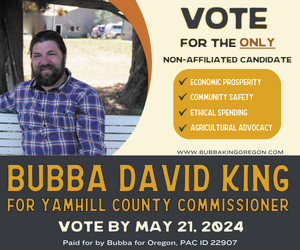Community educational efforts key to countering youth suicide

“It takes a village to raise a child” is an ancient proverb originating with indigenous tribal cultures in West Africa.
It’s based on the premise that successful child rearing requires collaborative effort not only among parents, siblings and other members of the immediate family, but also among friends, neighbors, teachers, coaches, employers and other conduits of social and emotional influence.
That can ultimately come to encompass any member of the community with whom the child might have meaningful interaction. It suggests we all have a role to play in our metaphorical village, and unbeknownst to us, even our bit part could prove crucial.
Our thoughts take us this direction after two McMinnville High School students made the tragic, heartrending and utterly premature choice of death over life in recent weeks.
Could any of us have sounded some kind of alarm or taken some kind of action serving to bring one of these troubled teens back from the brink? It’s impossible to know, but giving up all hope is a mark of moral bankruptcy.
If any good can come from an act of such searing impact, it lies in helping rally the rest of us to help prevent the next one. Saving even one child makes an indelible contribution.
The statistics are familiar by now, but no less troubling through the repetition:
Thanks to a deeply embedded gun culture, the U.S. has one of the highest suicide rates of any developed nation. It has been averaging almost 50,000 suicides a year, representing a 30% surge in the last quarter-century.
Oregon ranks high among states and Yamhill high among counties. More than half of Yamhill County suicides involve firearms, which prove fatal in 97% of attempts.
Suicide is elevated among the young, old and male; the mentally ill and incarcerated; veterans of military service; victims of bullying, rejection, neglect and abuse; and members of the LBGTQ community. It’s a leading cause of death in an array of demographic units, including youths 10 to 24.
There are two schools of thought when it comes to appropriate public response.
One counsels the least attention possible, on the premise that each person who succeeds may embolden another. The other counsels broad and open communication, on the premise being placed on full alert and armed with full information will best prepare us to make a meaningful difference.
We embrace the latter approach. We do so on the grounds it’s essential to face shared social and political challenges head-on, even when they are as delicate and difficult as teen suicide.
In our reading, that also seems to be the consensus among local public health and education officials. They have engaged the community in a highly proactive and collaborative educational effort, and we commend them for it.









Comments